How to Clean Mildew Off Books
Mildew on a book must be dealt with, or it could spread through your entire collection, leaving all the books unfit for reading. Damp, dank conditions such as storage in a humid or wet area, lead to mildew and mold.
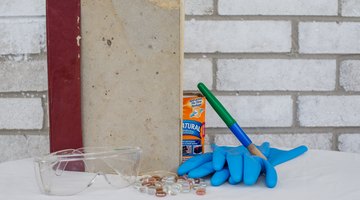
If the dampness is within your home, air out the space or add a dehumidifier to remove excess moisture; otherwise, the problem could happen again. Brush or vacuum off each book outdoors while wearing a dust mask, goggles and gloves to avoid contact with the mildew or mold, which may aggravate or cause health concerns.
Things You Will Need
- Rubber gloves or surgical gloves
- Clean rocks
- Soft-bristled brush
- Vacuum cleaner with HEPA filter
- Mesh screen
- Baking soda
- Cardboard box
Tip
Keep books only in dry, non-humid areas to help prevent mildew or mustiness. Air circulation also helps keep the book and its pages dry and smelling their best. Treat stains left behind by mildew using 3 parts hydrogen peroxide, 1 part distilled water, applied lightly with a cotton swab. Test on an inconspicuous area or only on non-valuable books, as peroxide may weaken the paper over time.
Warning
Replace the HEPA filter in your vacuum cleaner after vacuuming mildew or mold.
If the books are extremely moldy or mildewed, replacing them is the healthier alternative to cleaning them. Minimize your exposure to mildew to protect your health.
-
Carry the mildewed books outdoors while wearing rubber gloves and a dust mask. The mask helps prevent breathing in airborne spores that may cause or aggravate health issues.
-
Allow the books to air dry outdoors in a protected area if they feel damp or wet; this may take all day or even longer if the books are very wet. Carefully open books that have wet interior pages to speed up the drying; place small, clean rocks or other handy weights on the pages on each side to help keep the book open, if necessary. Skip this step if the books are already dry.
-
Brush any visible mold and mildew, discoloration or powdery substance off the exterior of the book using a soft-bristled brush such as an artist's brush or makeup brush. Check the book's spine, page edges and back cover as well to ensure all exterior mildew has been brushed away. A vacuum cleaner with HEPA filter may be used instead of, or in addition to, a brush.
-
Open the book's front cover and brush or vacuum away any evidence of mildew on the inside of the cover. Repeat the process for the inside of the back cover.
-
Inspect the book pages, looking for spots or residue that may be mildew. Brush the mildew away with a soft-bristled brush, brushing vertically to avoid sending particles toward the book spine. Vacuum the pages, if desired, by placing a mesh screen such as a piece of window screen over the page, vacuuming through the mesh. This prevents the paper from tearing.
-
Allow the books to air dry for a day or two during warm, non-humid conditions to remove additional mustiness. Stand the books open so air circulation reaches the pages as well. If the books still smell musty or mildewed after a day, sprinkle baking soda in a cardboard box; then set the books in the box, leaving them standing with pages open. Close the lid and keep the box in a non-humid area, ideally outdoors, for up to a week until the odor is gone. Check the box after a day or two -- if the box itself absorbs the odor, replace the box and baking soda. Wipe the baking soda off the books, if need be, before placing them with other books.
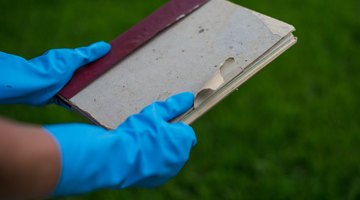
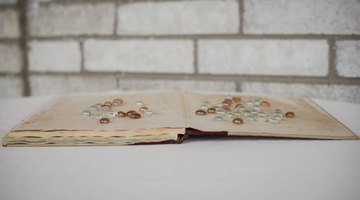
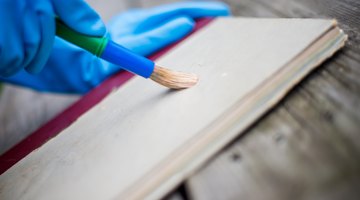
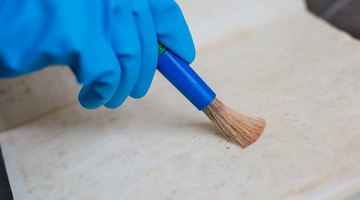

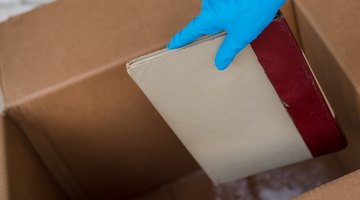
The Drip Cap
- Mildew on a book must be dealt with, or it could spread through your entire collection, leaving all the books unfit for reading.
- The mask helps prevent breathing in airborne spores that may cause or aggravate health issues.
- A vacuum cleaner with HEPA filter may be used instead of, or in addition to, a brush.
- If the books still smell musty or mildewed after a day, sprinkle baking soda in a cardboard box; then set the books in the box, leaving them standing with pages open.
- Check the box after a day or two -- if the box itself absorbs the odor, replace the box and baking soda.
References
Resources
Writer Bio
Kathy Adams is an award-winning writer. She is an avid DIYer that is equally at home repurposing random objects into new, useful creations as she is at supporting community gardening efforts and writing about healthy alternatives to household chemicals. She's written numerous DIY articles for paint and decor companies, as well as for Black + Decker, Hunker, Landlordology, SFGate and others.
Photo Credits
- Joni DeShazier/Demand Media
- Joni DeShazier/Demand Media
- Joni DeShazier/Demand Media
- Joni DeShazier/Demand Media
- Joni DeShazier/Demand Media
- Joni DeShazier/Demand Media
- Joni DeShazier/Demand Media
- Joni DeShazier/Demand Media
More Articles



